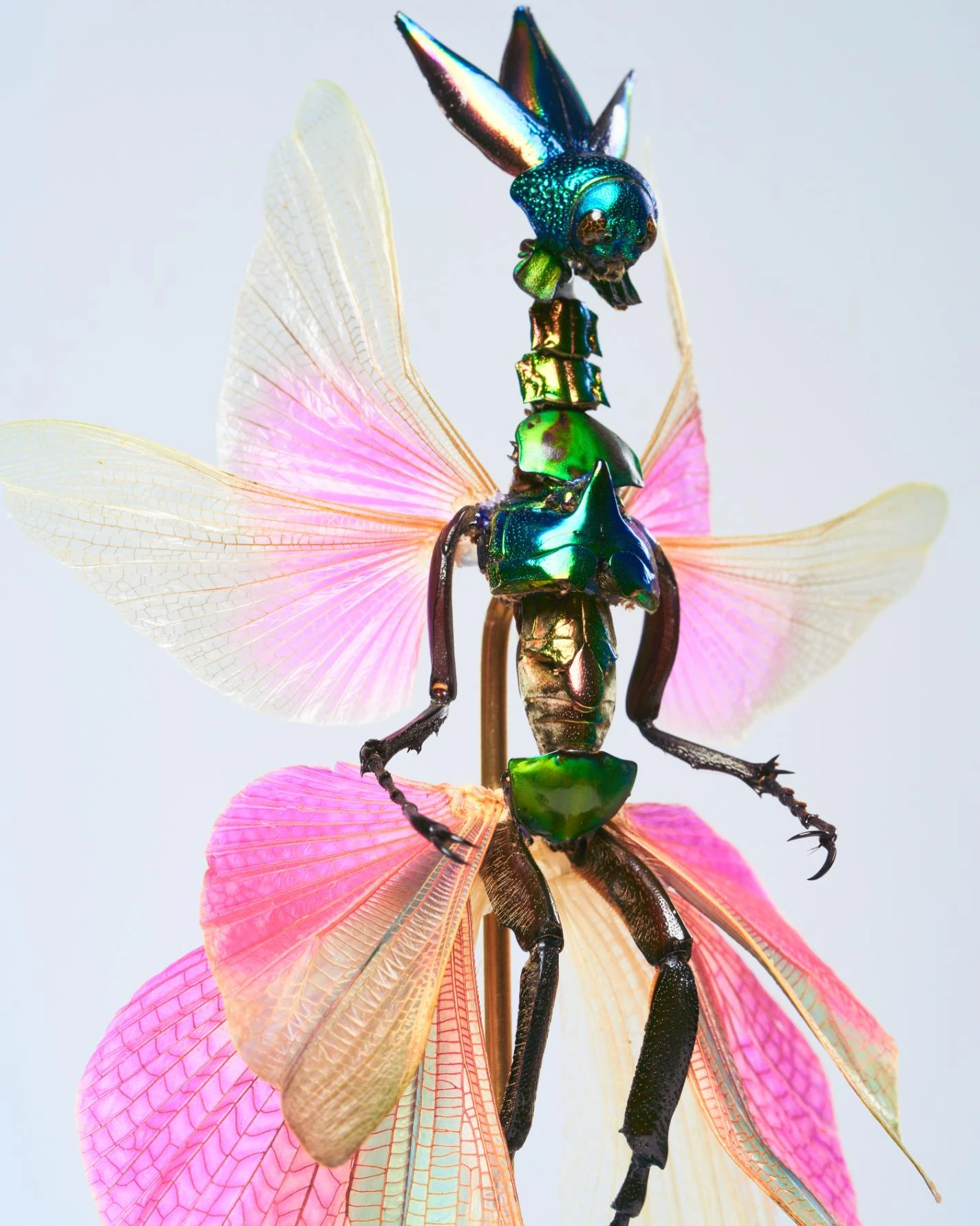
- Date
- 18 MARCH 2025
- Author
- MIRA WANDERLUST
- Image by
- CEDRIC LAQUIEZE
- Categories
- Interviews
From Fairies to Floral Taxidermy in Conversation with Cedric Laquieze
In a world where contemporary art is often defined by fleeting trends, Cedric Laquieze stands out for his profound visual identity and commitment to the slow process of creation. A surrealist artist, Laquieze’s innovative approach to materials blurs the lines between sculpture, nature, and design. His work, shaped by his background in Los Angeles and Amsterdam, combines striking color and form with emotional depth. A graduate of the Rietveld Academy, Laquieze’s artistic practice challenges traditional boundaries by reimagining the extraordinary within the mundane.
His creations, such as ethereal fairies made of insects and surreal taxidermy crafted from vibrant flowers, explore themes of nature, beauty, and the delicate balance between life and death. Laquieze’s work has gained global recognition, with collaborations with brands like IKEA and Iris van Herpen and exhibitions at institutions like Ripley’s Believe It or Not! His dedication to meaningful craftsmanship stands in contrast to the fast-paced art world, encouraging deeper reflection on the role of art in our lives.
Through his work, Cedric Laquieze invites us to reconsider our perceptions of beauty, challenging us to engage in a broader dialogue about art’s significance in a fragmented world. Let’s dive into our conversation with Cedric to explore the inspirations, philosophy, and creativity behind his captivating artistry.
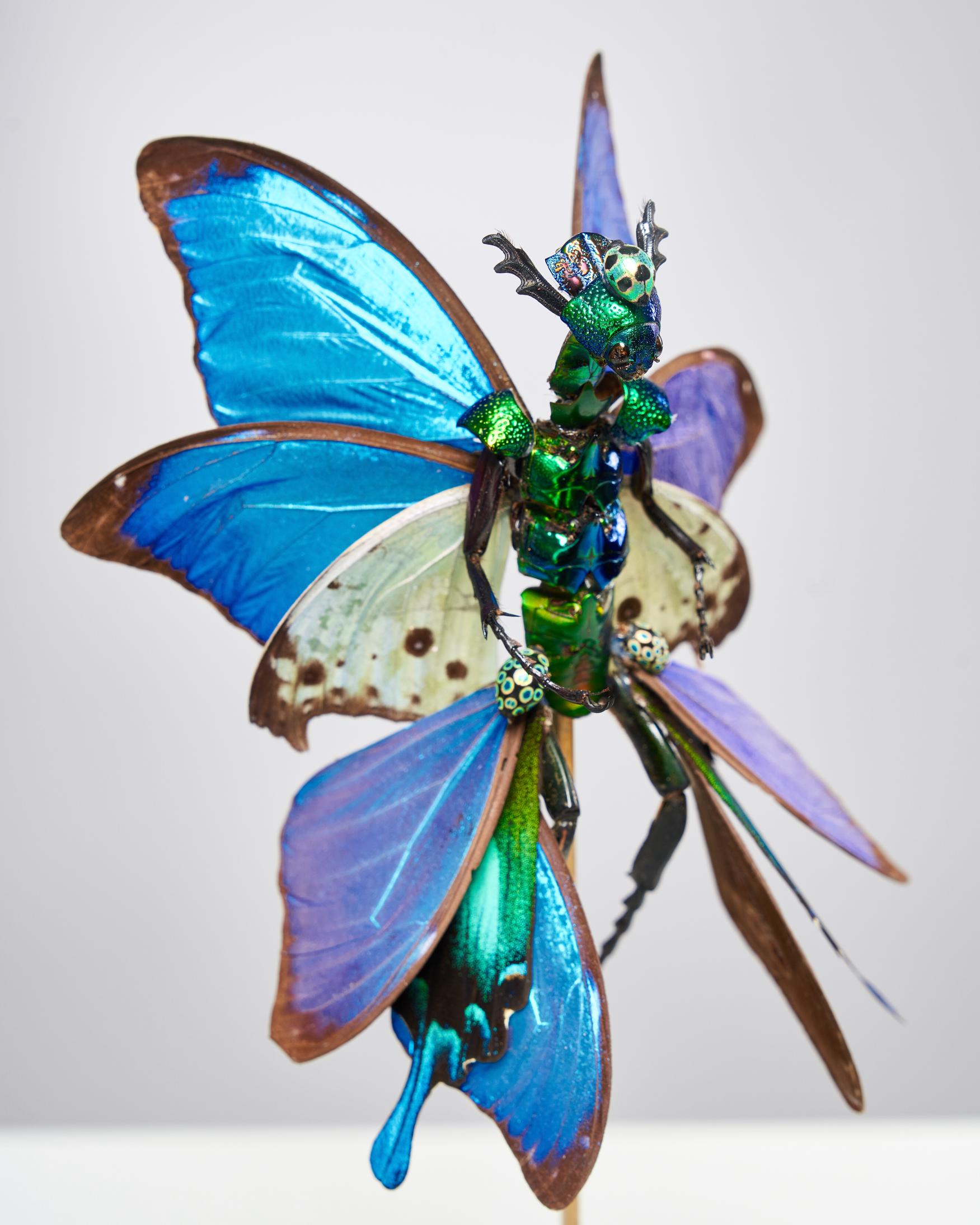
Hello Cedric, welcome to Red Eye. Your fairy artworks are blending elements of sculpture, fashion, and design. Can you describe your creative process when conceptualizing a new piece? Regarding the research process, how do you choose the materials that will best express your vision and highlight the themes of surrealism and color?
First of all, thank you for reaching out!
When a new concept comes to me, it often appears as a kaleidoscope of images. I start with a rough sketch in mind, then envision a rapid slideshow of textures, references, and visuals. When the right element aligns with the design, I feel it instantly—like a surge of excitement or euphoria, much like finding the perfect puzzle piece after a long search.
Your creations include fascinating combinations such as fairies made of insects and taxidermy made of flowers. What drives your interest in these unusual pairings, and how do you see them contributing to a dialogue about nature and beauty? Could you share the inspiration behind a specific piece that showcases this approach?
I like to think of my designs as contemporary reinterpretations of classic aesthetics—a kind of "rock and roll" take on timeless beauty.
Take, for instance, Leo Vulgaris—a lion skeleton adorned with artificial flowers. The idea stemmed from a desire to create something both soft and aggressive. The skeletal structure of a lion naturally embodies power and dominance, while the vibrant flowers introduce a sense of renewal and fragility.
The result is a striking composition that speaks to life after death—where raw strength meets delicate beauty in a visceral, almost poetic, contrast.
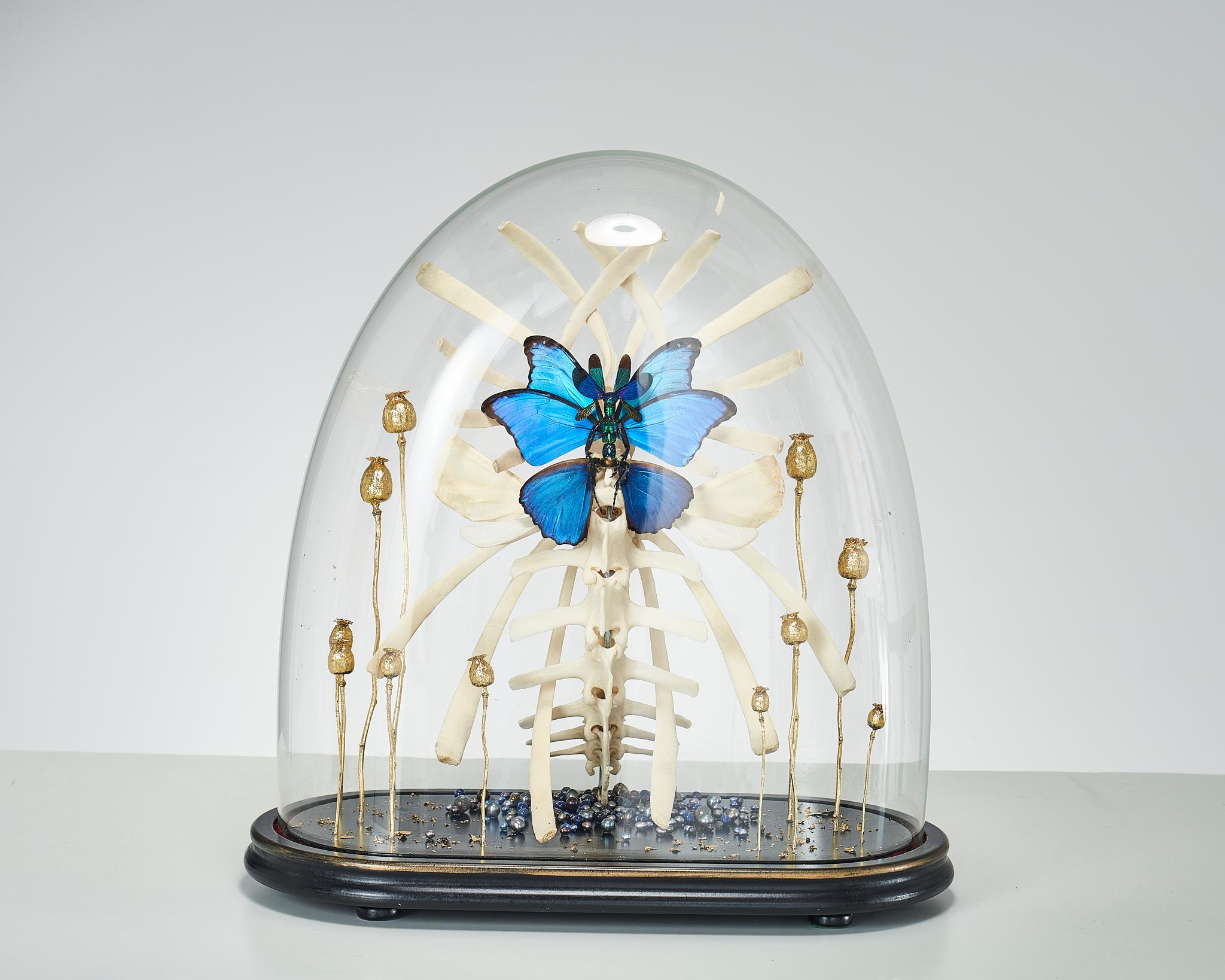
Collaboration is a significant part of your career, with partnerships involving brands like Iris van Herpen. How do you approach collaborations in a way that preserves your artistic integrity while also integrating the vision of your collaborators? Can you discuss a notable collaboration that was particularly impactful or transformative for you?
Collaborations can be tricky. I like to think of myself as a big kid, and in many ways, collaborations feel like creative playdates—some work seamlessly, while others don’t.
I’m fortunate to receive frequent collaboration requests, and I usually say yes, if only for the opportunity to learn a new craft or create something beyond what I could imagine alone.
Right now, I’m collaborating on a piece with Stephan Duq, which I’m really excited about, as well as a photo project with Sjouke van Google. I’ve also partnered with my colleague Amy Jo Will to launch TUUN, an online gallery that represents a growing number of artists who share our aesthetic vision.
Your work has been displayed in numerous exhibitions and has attracted attention from various publications. How do you feel your sculptures resonate with audiences? What emotions or thoughts do you hope to evoke in viewers when they engage with your artwork?
I feel incredibly lucky that my work is reaching such diverse communities. Anyone in my position can only hope to share their vision with as many people as possible, and I’m grateful that my style resonates with both classic and modern institutions.
Putting yourself out into the world can be terrifying, but the feedback and encouragement I’ve received have far exceeded my expectations. It has given me the confidence to keep creating and to dream even bigger.
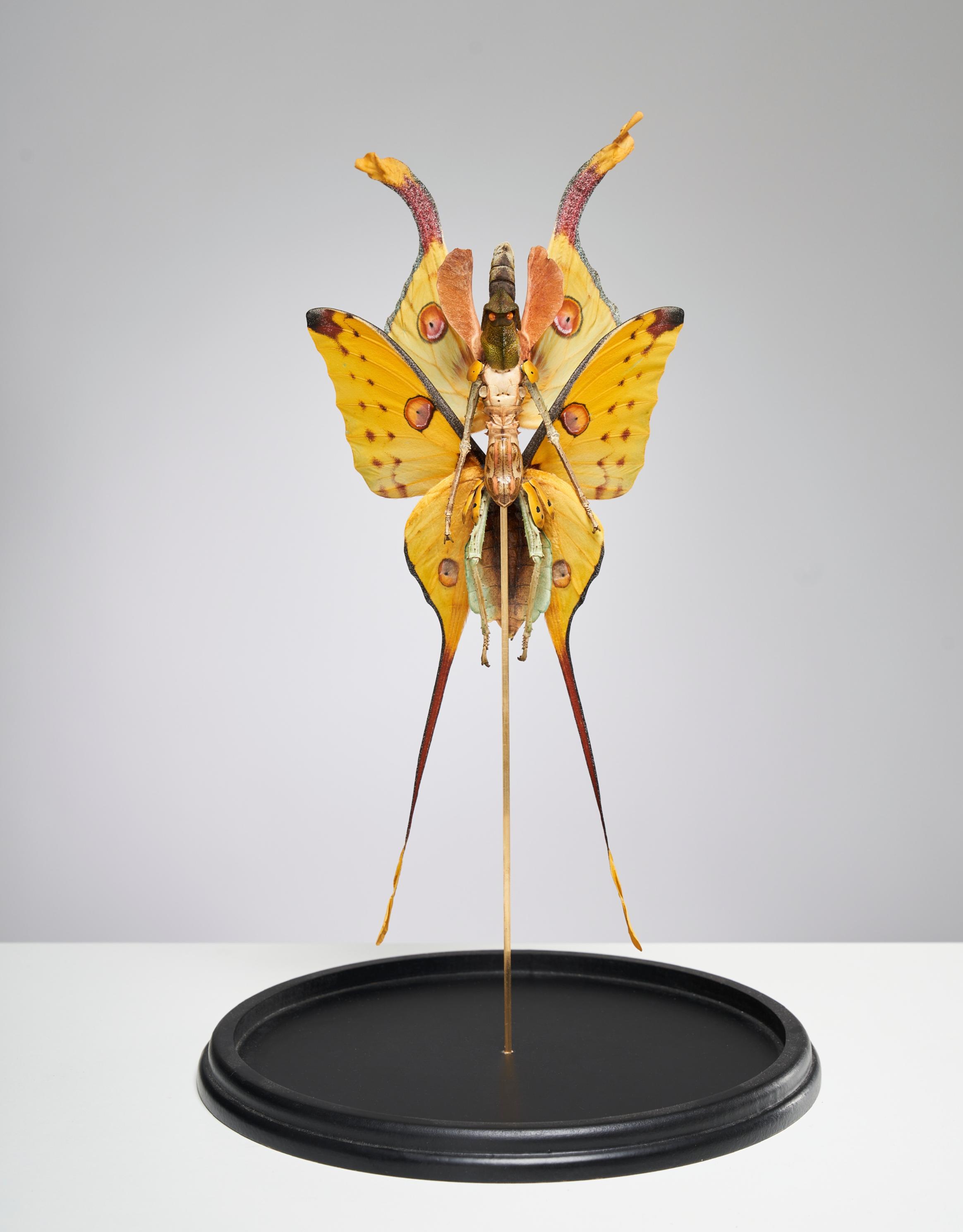
Timeless beauty is a recurring theme in your pieces. How do you interpret and express this concept through your art? In your view, what elements contribute to the notion of timelessness in relation to nature, form, and design?
That’s a great question!
From a young age, my fascination with fantasy exposed me to aesthetics from the ancient world—architecture, sculpture, costumes, and more. Later, I fell in love with the iconography of alchemy and the hand-painted manuscripts of the Illuminated Era. As an adult, I began drawing inspiration from contemporary fashion designers, jewelers, and other artists.
Across all these influences, I seek the common thread—the beauty that unites them all. Carl Jung spoke about this in his exploration of symbols within the collective subconscious, and I see it as the essence of timeless beauty. For me, these archetypes are always connected to nature in some way.
As an artist, how do you stay inspired and continue to push the boundaries of your work? Are there particular sources of influence—such as nature, art history, or current events—that you draw upon to evolve your creative practice?
I believe imagination is like an ecosystem—when given the right conditions, it flourishes, growing bigger and stronger on its own.
As I mentioned before, nature is my greatest teacher and an endless source of inspiration. That said, I’ve been fortunate to exhibit my work in Istanbul and Italy last year with some amazing craftsmen, and right now, I’m surrounded by vibrant, innovative artists who constantly inspire me.
I’m always excited for the next project!
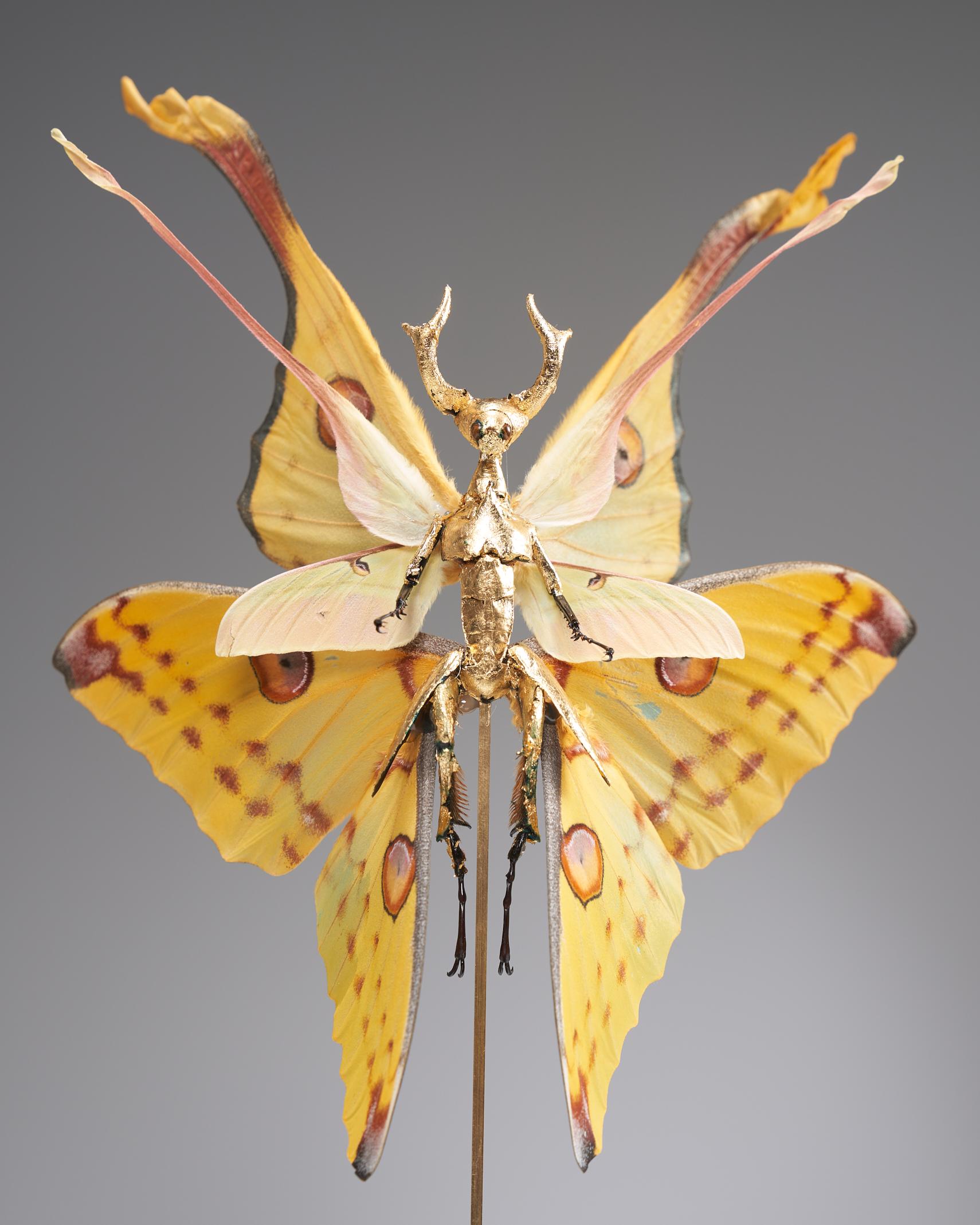
Looking to the future, what new themes or materials are you eager to explore in your upcoming projects? How do you envision your work evolving in response to the changing landscape of art and design, particularly in relation to contemporary issues?
I’m currently working on a new series called Archetypes, which is unlike anything I’ve done before, both in concept and materials.
This series is a contemporary reinterpretation of classical marble busts of gods and heroes. My goal is to create abstract archetypes that appear across all forms of storytelling—whether in mythology, religion, or fairy tales.
The first pieces in the series are titled The Mother, The Pagan, The Sinner, and The Prophet. The final two, The Emperor and The Young Hero, will complete the first collection.
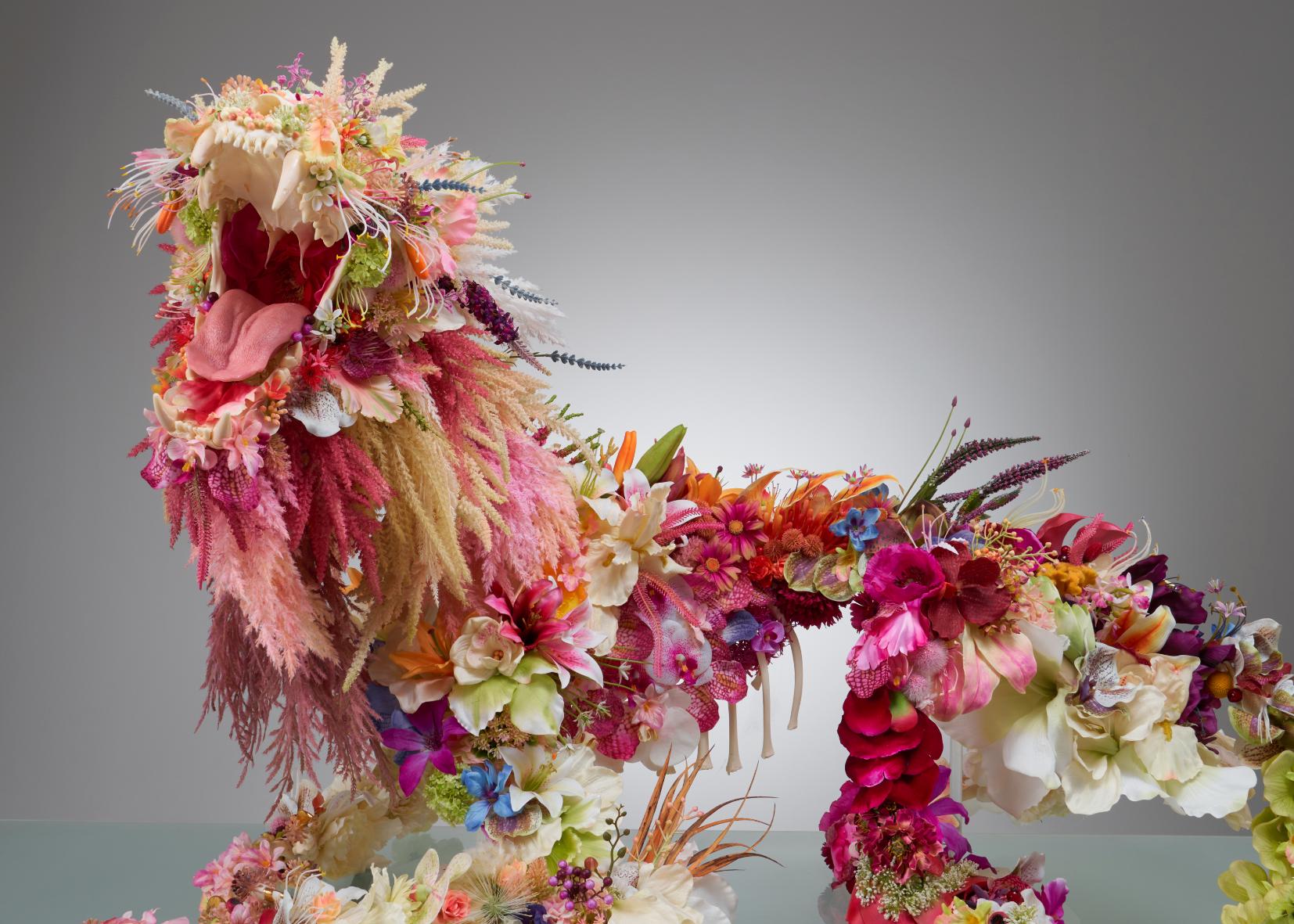
Interview by @mirawandelust
Image courtesy of @cedriclaquieze